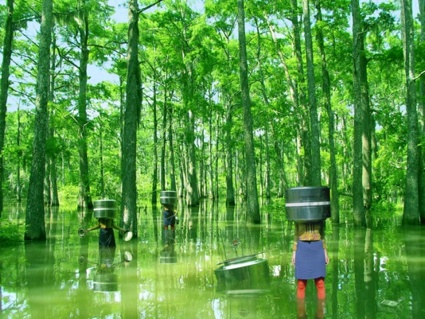
I met Signe Lidén over the Summer at FARM, a festival that brings digital art into rural contexts. The event was set in Tufo, a small town famous for its wine. Tufo is located in the mountains near Naples, people there are fantastically friendly, there’s only one bar with wifi, the supermarket is inside a pastel-coloured ex-cinema but damn that place was so hot and sunny i almost got a tan.
In Tufo, Signe was performing the sound pieces she had recorded while traveling on the train line between Benevento-Avellino. The field recording were an homage to the rural train line that is threatened to be shut down next month.
I had actually come upon the work of this young artist several times in the past. Two years ago, when i visited Bergen for Piksel, the festival for Electronic Art and Technological Freedom. And back in May when i spent a whole afternoon listening to the sound files and watching the videos collected for the project The Cold Coast Archive: Future Artifacts from the Svalbard Global Seed Vault.
Being more used to visual arts, i’m fascinated by Signe Lidén’s work, by the way uses field recordings to evoke and communicate the places and spaces she investigates.
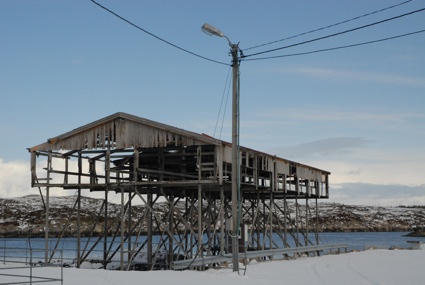 Hitra, Lost and found lyrics from a floating bridge, 2011
Hitra, Lost and found lyrics from a floating bridge, 2011
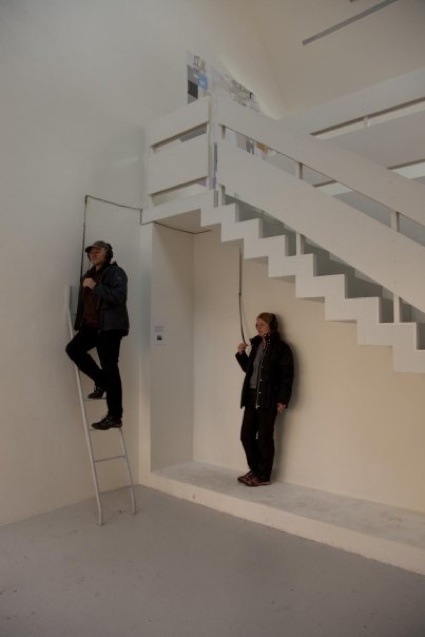 Rohrism I, 2010
Rohrism I, 2010
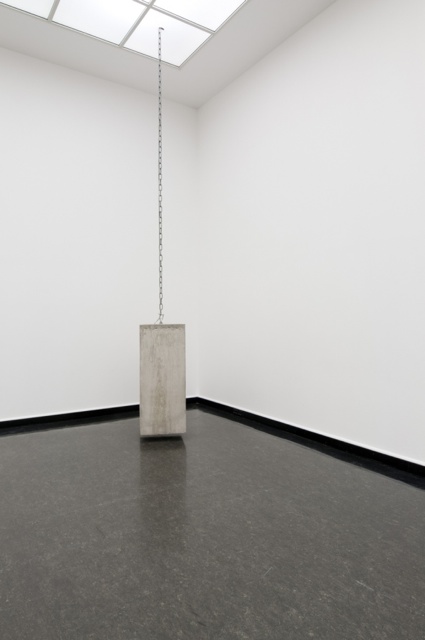 Urphänomene, 2012
Urphänomene, 2012
i’m very intrigued by urphänomene . It is a “sounding concrete block”. How does it sound? How can it sound? And why did you chose to work with a material as stern as concrete?
The concrete block is actually hollow. Inside it is a box, soldered by resonant metal. A transducer is attached to the metal and transmit the sound that I send into it and turn the whole block into a speaker. The fact that the sound that streams out of the concrete is metallic is as contradictory as the elevated heaviness of the concrete. I have a strong interest in the relationship between matter and message in architecture and in urban planning design.
The places that I research in my art practice are often man-made landscapes meant to function as physical manifestations of ideas or ideologies. However, these often take the form of abandoned places, where the imprints of history evoke a dialogue or a dispute with the intended ideas that the places were meant to communicate. Such places are often the starting point of my works but still, in Uhrphänomene, there are various factors that played a part in determining the installation piece.
The sound that I send into the concrete is recorded in Svalbard during the field trip for The Cold Coast Archive. During one of night in Longyearbyen, a storm hit the archipelago and as I could´t sleep, I went out to feel the wind upon my body. Outside, I heard some sounds that caught my interest and I ran back home to get my recording equipment and tracked down the source of all these sounds. It came from my favourite building in the mining town: a huge empty steel construction elevated on poles. The building had formerly served as the central machine hub of the cable cars carrying coal from the surrounding mines which usually stood as a mute symbol of the city’s once-industrious past. It trembled in the wind and the rain bombarded its surface. It was a mysterious, wonderful cacophony and I recorded for hours. Later, back in Bergen preparing for my graduation show, I thought of different ways of using the recordings from that stormy night and I decided I wanted to create a place for them and that place turned out to be Uhrphänomene.
As I often work with field recordings of sites, I have been thinking a lot about how to merge the sound into a new “site”. I started to work with sound because of its spatial qualities. I realized that sound makes it possible to perceive many places simultaneously, and even better combine outside and inside objects and spaces at the same time. The rearranging or composing of the recorded sounds are in a way an embodiment of multi-temporalities.
So, again, the question that has been hunting me the past years, as my approach to sound is mostly site specific, how to bring the sound back to space? Urphänomene was one answer, the online exhibition of The Cold Coast Archive is another answer and in the future, I am sure there will be a lot more materialisations of approaches to this question.
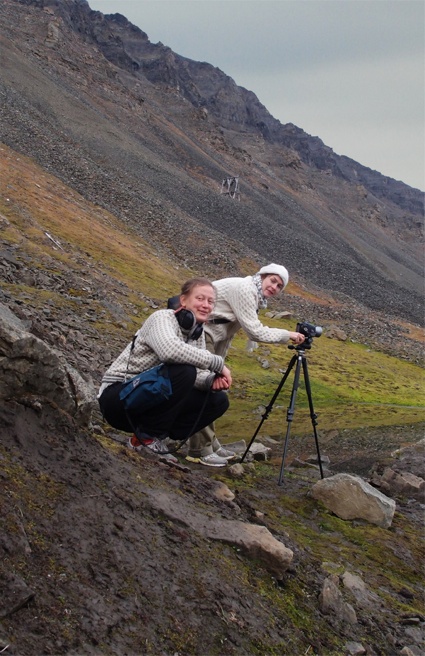 Field trip for The Cold Coast Archive
Field trip for The Cold Coast Archive
You seems to be particularly fascinated by holes. Why is this a theme you want to investigate?
The potential inaccessibility, their link to history and the temporal qualities are some of the reasons why holes have got such a big importance in my practice.
Holes and caves have functioned as time-capsules throughout history. The oldest artworks were found in holes, as well as the oldest records of ritualistic and performative activity. The choice of caves for such activity is closely connected to the body, both by being shelters and by virtue of their acoustics. Holes are places where natural filtering of the sounds of the surrounding occurs, like in pipes, so the sonic qualities of holes can be great.
Another, very different, fascination is that the conception of a hole is hard to grab: a whole is a nothing, yet it is. If we want to describe a hole, we mostly have to describe it as an absence of something else, describe it by its surrounding (a hole in a bread), or the opposite; describe it by some “alien” content (a hole filled with cheese). When I do audio recordings, I often seek for holes because of their ability to filter the surrounding sounds. In my research, I am mostly interested by man-made holes in nature, built to store or hide things for a longer periods.
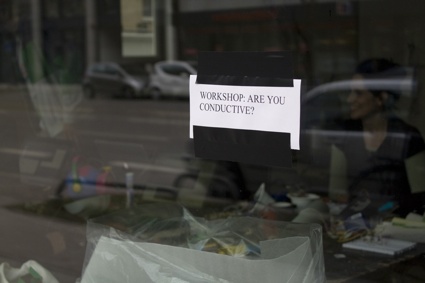 Are you conductive? workshop & installation with Stefanie Wuschotz, Munich
Are you conductive? workshop & installation with Stefanie Wuschotz, Munich
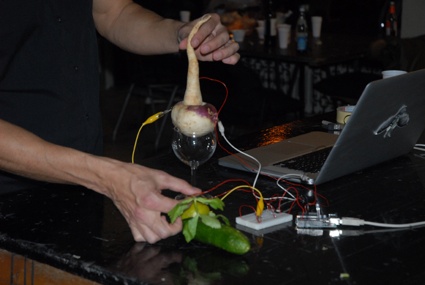 Are you conductive? workshop & installation: a vegi-potentionalmeters controlling sound pitch and volume
Are you conductive? workshop & installation: a vegi-potentionalmeters controlling sound pitch and volume
You also happen to pick up the most uninteresting cavities to explore: The Global Seed Vault, in Svalbard, Onkalo Nuclear Waste Repository in Finland, Damanhur Temples Of Humankind in Italy, The Archive of Invisibility and Lost Knowledge in China. I had never heard of the Onkalo Repository. Have you visited it already? How do you plan to use it in your work?
These cavities all links to a specific timescale: they deal with eternity, although in very different ways. I have been interested in their practical and symbolic significance, their shapes, architecture and acoustics, their ritualistic aspects and relation to time, as a starting point for an exploration of human beings’ efforts to preserve civilization and defy the inevitability of its demise. These cavities can be seen as time capsules even though their reasons and strategies of preserving varies. The first stores seeds for a potential restart of life on earth, the second hide lethal waste as the third seeks to preserve global spirituality, and the last collect gestures that turn objects into art.
They have been cases of investigation and important influences on my latest works but I am now mostly focusing on one of these holes, the Archive of invisibility and Lost Knowledge. I actually created the name myself, based on an oral explanation of its Chinese name. I will stay a bit secretive about this until I finish my work about this place.
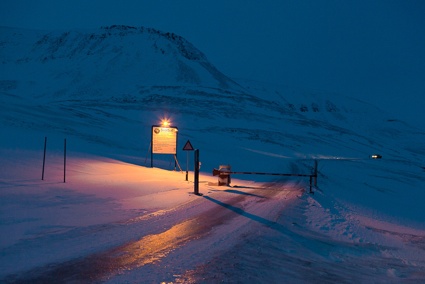 Cold Coast Archive. Image by Steve Rowell
Cold Coast Archive. Image by Steve Rowell
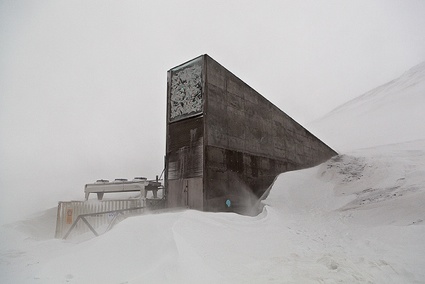 Cold Coast Archive. Image by Steve Rowell
Cold Coast Archive. Image by Steve Rowell
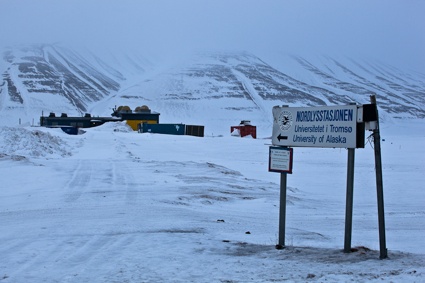 Cold Coast Archive. Image by Steve Rowell
Cold Coast Archive. Image by Steve Rowell
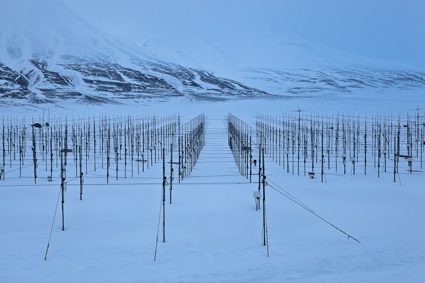 Cold Coast Archive. Image by Steve Rowell
Cold Coast Archive. Image by Steve Rowell
I had Steve briefly speak to me about the Cold Coast Archive a couple of months ago. But i’d be interested to hear about your experience of the expedition. How did you get involved in the project and what was your part in it?
I was contacted by Steve Rowell who wanted to do a collaboration on the topic of The Global Seed Vault, and we started to develop the idea about how we approached an art project about a place like this. Later on, Annesofie Norn, a good friend and colleague of mine joined the project. We all went on field trips to Svalbard and visited the seed vault to gather material. Steven went up north the winter 2011 together with Alexander Rose from The Long Now Foundation, and Annesofie and I went for a longer trip summer 2011.
The materials; video, sound, interviews, photos are all gathered and accessible at The Cold Coast Archive website. The artworks are mapped inside the landscape-organism (I am not sure what to call it) and the idea is that you move around from a sound work to a video, via an interview and a photo, with the help of a language based compass. For example …
I also made something I called an “Evigatur”, an apparatus who is created to record activity in the vault and write it into a vinyl. The first vault-record was sent down and replaced with an empty record for the launching exhibition at Museum of Postnatural History. The next record will be gathered around Christmas, and the idea is that it will be a growing contemplation of the sounds of the vaults activity.
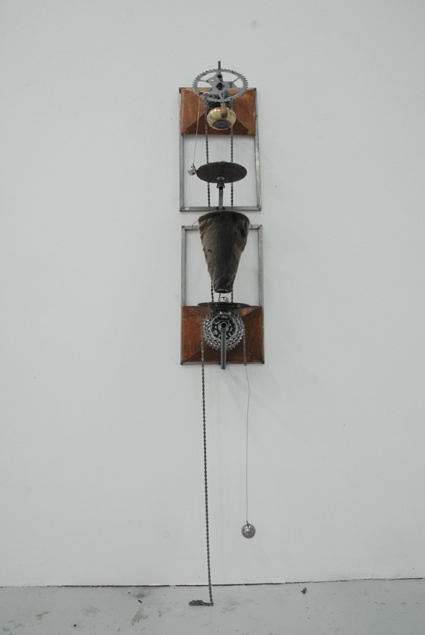 Evigatur
Evigatur
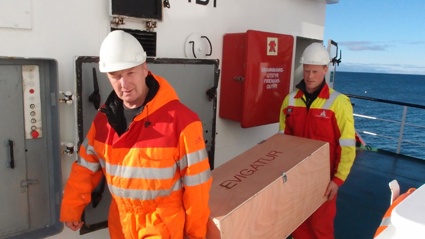 Evigatur
Evigatur
Is it easy to get access to the site and visit it?
It is not easy. Your visit have to be accepted by the information director, professor Roland von Bothmer, who has to come up from Sweden and guide the visitor. Mostly journalists, artists or politicians are among the list of people who have been visiting. They have been having some problems keeping the temperature down and steady, mainly because of the old power station in Longyearbyen, powered by coal from the only active mine in the area, who shuts off the electricity to the seed bank when it has problems. But also because of the visitors’ effect on the temperature inside, so they were talking about being even more restricted. On the other hand, the people working with plant breading, seed banks etc. are interested to use the attraction of the The Global Seed Vault for spreading information about the importance of their case.
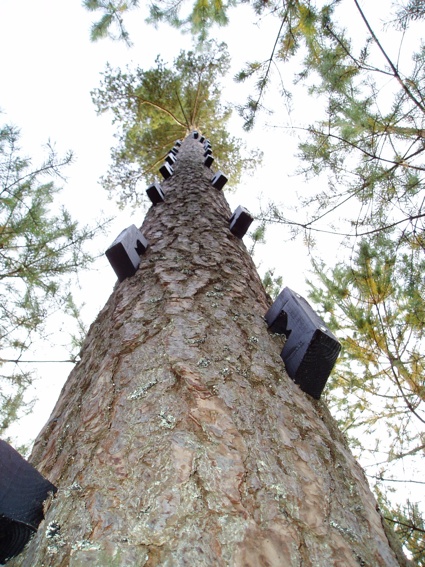 Koko, 2010
Koko, 2010
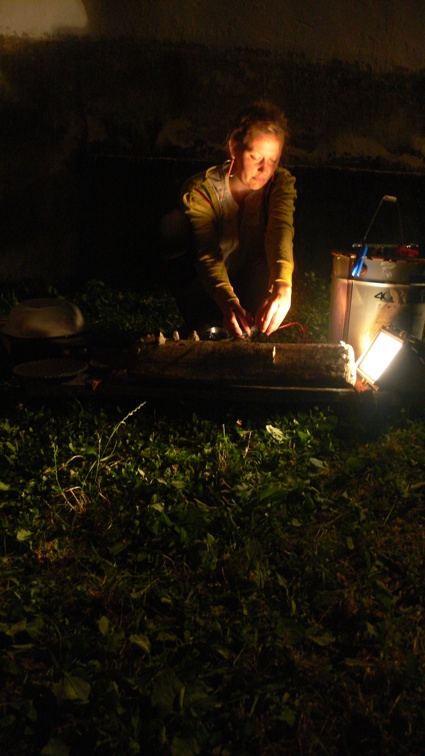 Concert with Per Platou at Stazione di Topolo , Italy
Concert with Per Platou at Stazione di Topolo , Italy
You are a sound artist, so what were the most surprising/beautiful/striking sounds you managed to record during the expedition?
As an answer, I will give you a link to Coupled Pendulum.
The text:
Last autumn I spent two months on the arctic island of Spitzbergen. One night, a storm hit the town of Longyearbyen. The sound of the wind kept me awake, so I ventured outside to confront it. Suddenly, I heard some strange sounds coming from the distance – a chorus of frenetic whistling, followed by a low banging. Having u back home to get my recording equipment, I tracked down the source of all these sounds; it came from my favorite building in the this mining town – a huge empty steel construction elevated on poles. The building had formerly served as the central machine hub of the cable cars carrying coal from the surrounding mines. This building, which usually stands as a mute symbol of the city’s once-industrious past, trembled in the wind. The rain bombarded its surfaces. It was a mysterious, wonderful cacophony and I recorded for hours.
The following day, as I listened to the recordings, I came to one track that stunned me. It was the sound of whistling wires recorded with contact microphones, yet there was something else on the recording: a deep motor sound, sometimes coughing, but mostly humming. I could not remember hearing any motor on the night I made the recording. Had I captured a time wrap? Did the wires circulate the low frequencies of the old machinery to keep its memory alive? I guess the Swedish sound artist Carl Michael von Hausswolff could have explained it as energy fields trapped in time. But ghosts aside, through this recording, I had accidentally captured something I had felt that night, but not been able to identify: the essence of that abandoned place- its mourning for its own past.
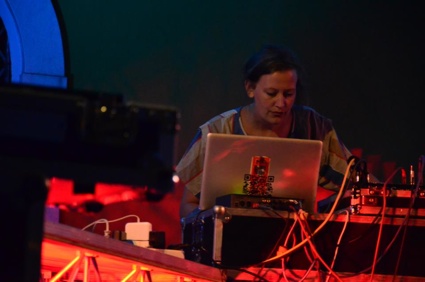 Performance at the Interferenze festival
Performance at the Interferenze festival
When we met a few weeks ago in Tufo, Campania (Italy), you were presenting a project related to a railway track. Can you tell us what the piece was about exactly?
I was invited to do a residency for the Interferenze New Arts Festival, working with the abandoned sulfur mines areas in Irpinia together with the South Korean sound artist Jiyeon Kim, in south Italy, but due to some organisational problems or miscommunication, we were not allowed to record on the mine area. As the practical impossibilities of my original idea were revealed, I was told that the railroad through the old mine area (a beautiful wine district with small villages and flourishing nature) were to be shut down in September. The shutting down of this line is a part of a larger dismantling of public transport in the whole area. I decided to make a tribute to this rail line as my contribution to the festival. I recorded the sound of the train, the track lines, station, the people travelling etc. and made an interview with one of the leading figures in the fight for saving the train lines in the area.
And what was the feedback of local communities (inhabitants and also maybe people working for the railway company).
I got quite a lot of comments after the live concert, mostly from people who told be about their relationship to the train and stories from their travels. I joined the facebook-group for saving the rail lines in the district.
You can listen to the recordings on aporee:
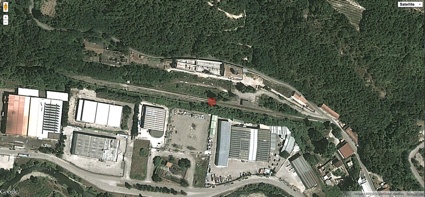
Recording of the Altavilla Tufo train station.
The alarm bell at the station.
Any upcoming work you’d like to share with us?
I am in the starting phase of quite a lot of smaller works, mostly installation pieces who explores transformation and transportation of places, aka in Uhrphänomene. And, as I mentioned, The Archive of Lost and Invisible Knowledge is a place and problematic that I will investigate further and I still do not know what the format this investigation will lead to. Am exited to find it out and I hope it will be something surprising.
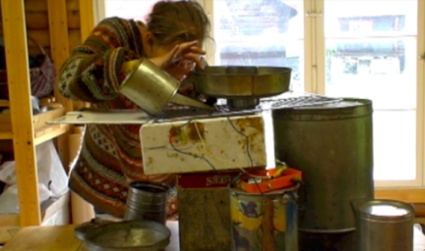 Electromagnetic resonant instruments, 2010
Electromagnetic resonant instruments, 2010
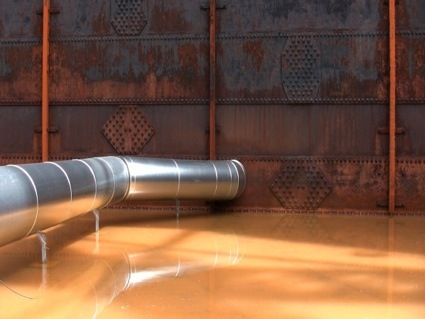 Rohrism II, 2010
Rohrism II, 2010
Thank you Signe!
Previously: The Cold Coast Archive: Future Artifacts from the Svalbard Global Seed Vault.
